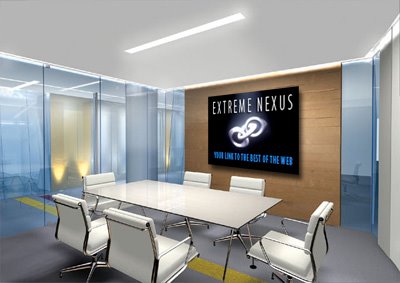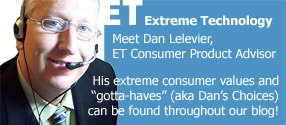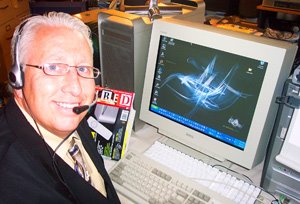A Paperless Office
ONE OF THE MAIN COMPONENTS of "extreme" technology is the true "paperless office" and a sophisticated computer network system that will allow workteam members to work from anywhere.

The technology, on which our paperless office will be based, will include a Digital Sender, scanning and voice-recognition software, and software that will convert scans into PDF (Portable Document Format) documents. This software will most likely come from ScanSoft, the leading supplier of speech and imaging solutions that are used to automate a wide range of manual processes - increasing productivity, reducing costs and improving customer service.Many people are familiar with and use scanning devices, but a Digital Sender is slightly different in that it can be directly connected to a TCP/IP network. It's called a Digital Sender because it converts documents into images (like any scanner) but can then distribute them directly to a variety of destinations such as outgoing e-mail, faxes, or a printer.
A 100-page sheet-feeder is the starting point from which paper will be converted to TIF (Tagged Image Format) files and sent to an inbox on our main server. Anyone who opens the mail and finds an important document scans it. The key is to have everyone scanning as mail comes in. We do not want to perpetuate the problem with paper . . . that when one is searching for a document, they don't know whether to look in the file cabinet or the waiting-to-be-filed box.
However, the technology isn't the main point; the lifestyle that it makes possible is. On any given day, we want workteam members to be able to work from their home, from a restaurant or hotel, from their vacation house, or from our 10-acre campus in Potrero, California. We will all be connected to our Citrix server by a VPN (Virtual Private Network), and the scanned document database will be available to the entire workteam on a virtual network drive.
We will most likely use a technology similar to Samba, which maps a virtual drive (almost like flash memory) on its networked server. The server will be a dual-processor computer with hard drives in a RAID format (Redundant Array of Inexpensive Disks). The RAID setup will spread our important data across three hard disk drives, mirroring or creating redundancy from one disk to another. That way, if one disk crashes, the redundant disks contain a mirror image of what was on the crashed disk.
Because RAID doesn't constitute a backup system in the usual sense, we will be using a high-end tape backup, and backup software (like "Amanda") designed for the Linux operating system.
Most people have heard of, but don't use, Linux and may not know exactly what it is. It's a relatively new operating system believed by many to be more stable than the high-end Windows operating systems. We will use Linux in conjunction with a program similar to VMWare, which will create a virtual Windows computer on which we will run our client software.
Note from DC: All of this means that remote computing will be fast and secure. But working outside the office doesn't mean never talking to clients and/or customers. For that, we will have a phone system that allows each of us to forward to his own remote location his own individual line, so people don't know whether they're calling a cell phone or a phone at an office or a residence.




















2 Comments:
If I may, I would like to extend an invitation to join a yahoo group for business people and individuals that have implemented paperless offices:
http://groups.yahoo.com/group/paperlesszone/
Also, please visit the group's blog:
http://paperless-zone.blogspot.com
Best wishes
Rita
Running a Small Biz, Virtually
Sometimes, getting a good answer depends entirely on how you ask a question and whom you ask. Equation Research (www.equationresearch.com ) is a small company that specializes in doing survey research on behalf of other companies, where it's imperative to collect the right data and ask questions the right way.
The company, founded in 2000 by Mike Travis, its CEO, has large customers, such as Condé Nast Publications, and many small ones. In fact, PC Magazine outsources its annual reader satisfaction surveys to Equation Research (www.pcmag.com/sr ). Notably, though, Equation has never had any physical office space. It relies on Web hosting of survey data, survey-creation software with templates, online project management software, e-mail, and instant messaging to keep its 17 full-time employees and 13 freelancers networked. The employees—most from project management backgrounds, some with statistical training—are scattered about eight states. A dozen servers (mostly Dell machines), Linux operating systems, SQL databases, firewalls, and password-protected security implementations keep Equation's surveys running smoothly.
Post a Comment
<< Home